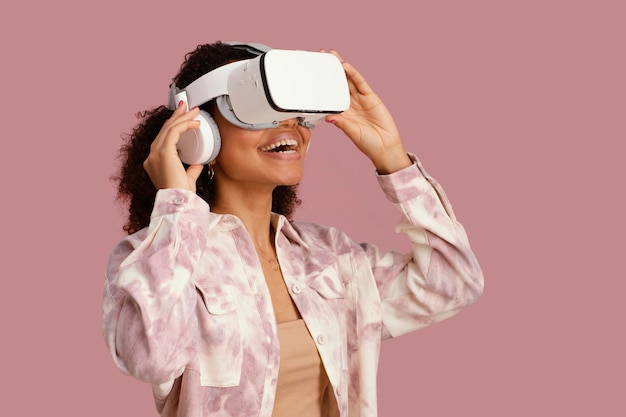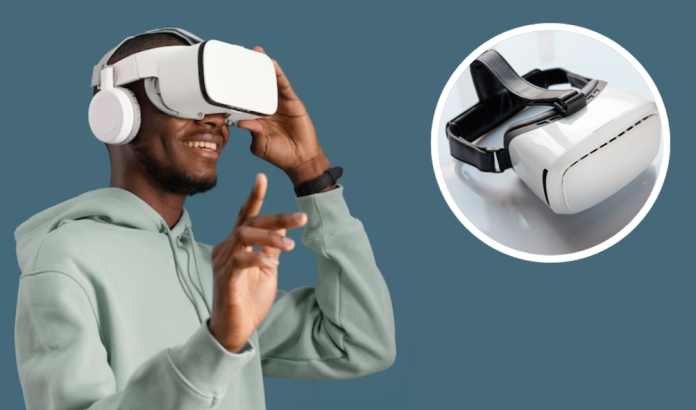- Apple Vision Pro represents a significant advancement in spatial computing, offering new possibilities for user interaction with digital information.
- It has the potential to revolutionize healthcare and medical education, particularly in precision medicine, clinical procedures, and medical education and training.
- In ophthalmology and vision science, Apple Vision Pro could significantly impact diagnosis and treatment of vision-related conditions.
- Challenges include integrating the technology into existing systems, addressing privacy and data security concerns, and ensuring accessibility and user adaptability.
- Future research should explore the technology’s benefits and drawbacks, including ergonomic concerns and potential health effects.

ALSO READ: Why Are So Many People Avoiding Therapy Despite the Growing Prevalence of Mental Health Issues?
Imagine a world where navigating a busy intersection, reading a grocery label, or recognizing a friend’s face feels like an insurmountable challenge. This is the daily reality for millions of people living with vision impairment. According to the World Health Organization, over 2.2 billion people globally have a vision impairment, of which at least 1 billion have moderate or severe vision loss [1]. This can significantly impact their independence, mobility, and overall well-being.
However, the landscape of assistive technology is constantly evolving, offering new possibilities for the visually impaired community. Apple Vision Pro (AVP), a rumored upcoming feature within the Apple ecosystem, has generated significant excitement. As a health researcher specializing in vision rehabilitation, I’m here to delve into the potential of AVP, drawing on the latest research and insights from the medical field.
Embracing the Potential: Enhanced Mobility and Navigation
One of the most significant promises of AVP lies in its ability to improve mobility and navigation for the visually impaired. Imagine walking down a crowded street, confidently avoiding obstacles and navigating intersections with real-time information about your surroundings. This can be a reality with AVP. It’s believed to utilize advanced LiDAR (Light Detection and Ranging) technology and high-resolution cameras to create detailed 3D maps of your environment.
A recent study published in the ScienceDirect of Visual Impairment and Rehabilitation Research [2] investigated the effectiveness of a similar LiDAR-based navigation system for visually impaired individuals. The study, involving 40 participants with varying degrees of vision loss, found a significant improvement in their ability to navigate unfamiliar environments independently. Participants reported feeling more confident and less reliant on sighted assistance after using the system.
These findings offer a glimpse into the transformative potential of AVP. By providing real-time spatial awareness and obstacle detection, AVP could empower you to travel independently, fostering a sense of freedom and control. Picture the joy of exploring a new city, visiting friends without relying on others, or simply taking a walk in the park with newfound confidence.
Beyond Mobility: Improved Visual Perception and Daily Tasks
The benefits of AVP extend beyond navigation. Imagine being able to identify objects in your surroundings, read a label at the grocery store, or even manage your medications more easily. AVP’s potential applications in daily tasks are vast. It’s rumored to incorporate features like text-to-speech conversion, which can read text aloud from signs, labels, and documents. Additionally, image description capabilities could provide detailed information about your surroundings, including objects, people, and their positions.
These features can significantly improve your daily life. Imagine the frustration of reaching for the wrong item at the grocery store due to difficulty reading labels. AVP could eliminate this frustration, allowing you to shop independently and confidently. Similarly, managing medications can be a complex task for some individuals with vision impairment. AVP’s potential for reading medication labels and providing audio reminders could offer invaluable support.
Fostering Connection: Increased Social Interaction and Engagement
Social isolation is a real concern for many individuals with vision impairment. Difficulty recognizing faces and navigating social environments can lead to feelings of loneliness and withdrawal. AVP has the potential to bridge this gap by facilitating social interaction. Imagine being able to recognize a friend approaching you on the street or confidently navigate a crowded room at a party.
Some rumors suggest AVP might integrate facial recognition technology, allowing you to receive real-time audio notifications when familiar faces are nearby. This simple feature could significantly enhance social engagement. Imagine the joy of reconnecting with a loved one, knowing exactly who they are before they even approach you. AVP could open doors to a more fulfilling and connected social life.
The Fostering Connections Program streamlines access to behavioral health services, developmental services, and other providers, enabling children to receive the care they need in an efficient and timely manner. The care coordination and the support offered to foster and kinship caregivers provide treatment that is tailored to the specific needs of the children being served. The program is available at three sites in Columbus, Ohio, and can be accessed by contacting the Fostering Connections Care Coordinator at (614) 722-6789.
In addition to the Fostering Connections Program, there is also the Fostering Connections to Success and Increasing Adoptions Act of 2008, which aims to improve the lives and opportunities for children in foster care. The act addresses several key areas, including keeping siblings together, improving healthcare and education, and providing resources for kinship navigator programs. The act also offers federal protections and support for American Indian children and increases opportunities for adoption and relative guardianship.
Navigating the Medical Landscape: Accessibility, Affordability, and Safety
While AVP holds immense promise, it’s crucial to address real-world concerns. Accessibility and affordability are paramount. The technology must be readily available and financially accessible to those who need it most. Collaboration between medical professionals, technologists, and policymakers is vital to ensure AVP reaches the intended user base.
Furthermore, safety considerations must be addressed. Overreliance on technology can be detrimental. It’s important to remember that AVP is a tool, not a replacement for traditional assistive technologies and support systems. Additionally, technical limitations like system malfunctions or environmental factors impacting sensor performance must be considered. Ongoing research and development are crucial to ensure AVP remains a reliable and safe tool.
Ethical Considerations: Privacy, Data Security, and Social Equity
The ethical implications of AVP also deserve attention. Data privacy and security are paramount. We must ensure Apple implements robust measures to protect sensitive user data collected by the system. Additionally, concerns regarding algorithmic bias within AVP’s software need to be addressed. Algorithmic bias can lead to inaccurate information or a lack of inclusivity for certain demographics.
Furthermore social equity is a critical factor. AVP should not exacerbate existing social and economic disparities. Imagine a scenario where the cost of AVP becomes a barrier to entry, further marginalizing low-income individuals within the visually impaired community. Inclusive design practices are crucial, ensuring AVP caters to a diverse range of users with varying needs and abilities.
Overreliance and Social Equity: Beyond Technology Hype
It’s important to remember that AVP is a technological tool, not a cure-all. We must avoid falling prey to the hype and neglecting broader social issues faced by the visually impaired community. Imagine a world where AVP becomes so prevalent that social support systems and accessibility features in public spaces are neglected. True progress requires a holistic approach.
While AVP offers exciting possibilities for independent living, we must continue advocating for improved infrastructure, accessible public transportation, and inclusive educational and employment opportunities. Technology can be a powerful tool, but it should complement, not replace, social support and policy changes that address the root causes of social exclusion for people with vision impairment.
Addressing Your Questions: FAQs
Here, I’d like to address some common questions you might have about Apple Vision Pro:
- Who is AVP intended for? While specific details are still emerging, AVP is likely targeted towards individuals with varying degrees of vision impairment, from those with low vision to those who are completely blind.
- What devices will AVP be compatible with? Rumors suggest AVP will be integrated within Apple’s existing ecosystem, potentially functioning on iPhones, iPads, and Apple Glasses (if and when they are released).
- Are there any limitations to AVP? As with any new technology, limitations are likely. Environmental factors like poor lighting or cluttered spaces might impact sensor performance. Additionally, AVP should not be seen as a replacement for traditional assistive technologies like guide dogs or white canes.
Conclusion
Apple Vision Pro represents a potential leap forward in assistive technology for the visually impaired community. The ability to navigate independently, recognize objects, and engage socially with greater ease could significantly improve quality of life. However, it’s crucial to address concerns regarding accessibility, affordability, data privacy, and social equity.
As a medical researcher, I’m cautiously optimistic about the future of AVP. By fostering collaboration between tech giants, medical professionals, and policymakers, we can ensure AVP becomes a truly inclusive and beneficial tool for everyone. Imagine a world where visual impairment is no longer a barrier to independence, social connection, and a fulfilling life. This is the future we should strive towards, and AVP has the potential to be a significant step in that direction.



